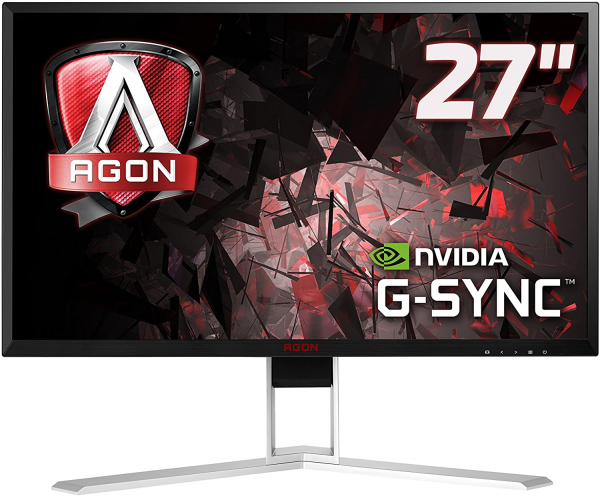AOC
AOC Agon AG271QG: the monitor with the most reactive IPS panel
Aprox. 684€
See specificationsOn paper, the AOC Agon AG271QG monitor is the G-Sync version of the Agon AG271QX (FreeSync) model that we have already tested. In practice, the two screens are very different. The G-Sync model has a more versatile IPS panel, but a little less reactive than the TN panel of the FreeSync model.
Positive points
Image quality.
Finish.
Responsiveness for an IPS panel.
G-Sync compatibility between 30 and 165 Hz!
Ergonomics.
Backlight scan (ULMB).
Bad points
Lower contrast ratio than that of a VA panel.
Where did the FreeSync version's external control box go?
Only two video inputs: an HDMI and a DisplayPort.
Our review
Presentation
The AOC Agon AG271QG from AOC also offers reduced connectivity and ignores the adjustment box. For the rest, we find the same design and the same ergonomics. The Agon thus embeds a 27-inch IPS mat panel displaying a Quad HD definition of 2,560 x 1,440 px in 16/9 for a resolution of 109 ppi. The native refresh rate of 144 Hz can be pushed to 165 Hz through the use of the G-Sync module and, most importantly, this monitor manages the backlight scanning (ULMB).
AOC is strong with this new G-Sync monitor since it is sold for less than 700 €. It is therefore a serious competitor to the Asus PG279Q (27 ", IPS, QHD, G-Sync).
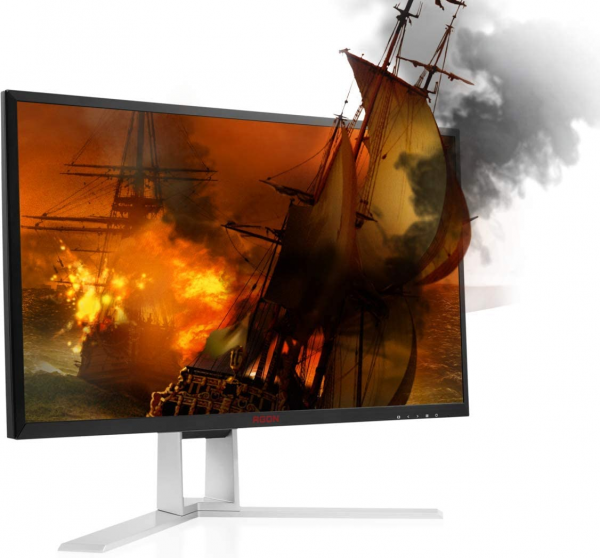
Ergonomics
For a gaming monitor, the Agon AG271QG is rather discreet (from the front). AOC mixes black and aluminum here with a little touch of red to affirm the gaming side.
The ergonomics are always excellent. The foot is thus adjustable in height by 13 cm, tilts between -3 ° and + 21 °, rotates in portrait mode and rotates ± 20 °.
The rear is less sober and the red allows to affirm the gaming side of the monitor. Small feature of this model, already seen on BenQ monitors, a small removable lug allows to hang headphones on the side.
As on the FreeSync model, the connections are grouped at the back and on the side, but it is more limited. Exit the DVI and VGA connectors, and there is only one HDMI input. There is also a DisplayPort 1.2 input and four USB 3.0 ports including a USB port offering between 1.3 and 1.5 A (yellow), two audio inputs and a headphone output. This monitor also has two 2 watt speakers whose quality is quite poor. They can troubleshoot, but in no case replace a speaker kit.
The OSD is accessible via the buttons located on the lower edge of the screen. AOC did not make any particular effort on the interface and we find the OSD of the other monitors of the brand. It is not as effective as what Asus offers with its joystick. Fortunately, the settings are numerous and allow you to adjust the brightness, contrast, sharpness, gamma, color temperature, overdrive, frequency overclocking and backlight scanning (ULMB).
We measured the consumption of this monitor at 23 watts with a white set at 150 cd / m², a little more than the 21 watts of the FreeSync model. Relative consumption is still limited to 86 W / m²: a very good value, much lower than the average consumption of the screens tested, which stands at 100 W / m². At a minimum, the screen consumes 19 watts for a brightness of 70 cd / m² and 65 watts with the brightness set to the maximum. Note also that the maximum brightness is very high since it exceeds 450 cd / m², which allows the scanning of the backlight - which reduces the brightness of the screen - in broad daylight.
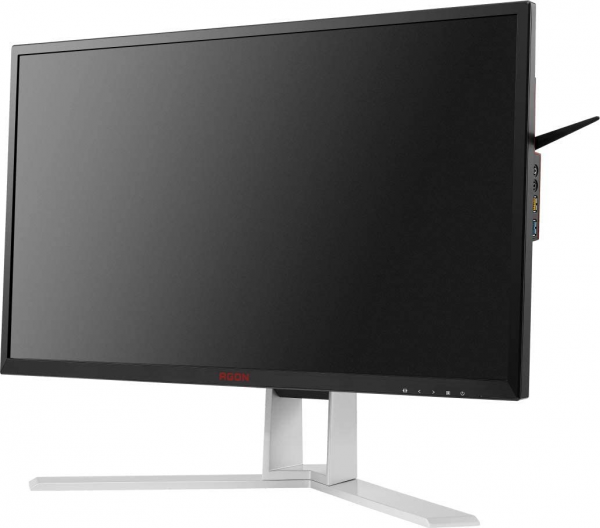
Colors and contrast
Default: average gray temperature: 6,650 K.
Default: gamma curve at 2.1.
Default: Delta E average at 2.1.
By default, the AOC AG271QG displays an excellent rendering and only the gamma curve lacks stability (average at 2.1). Delta E is measured at 2.1. Remember that below 3, the human eye no longer perceives the difference between colors. The colors can therefore be considered as faithful; only red and pure green are above 3. The average temperature is not far from the 6,500 K expected across the spectrum.
Manual adjustment: average gray temperature: 6,480 K.
Manual adjustment: gamma curve at 2.3.
Manual adjustment: Delta E medium at 2.3.
It is possible to bring the gamma up a bit by choosing the gamma 3 setting. The curve retains the same profile, but the average then changes to 2.3. We then set the brightness to 18 to get a white close to 150 cd / m². The temperature is then perfect (6,480 K) over the entire spectrum. Delta E is always less than 3.
Calibration using a probe does not do much for this model. It allows to stabilize the gamma curve slightly, but without really making the difference with manual adjustment.
The contrast of 1160: 1 is rather good for an IPS panel, but it remains weak in absolute terms and the blacks lack depth. In broad daylight, this has no impact on the image, but at night, the film's black bands appear gray. For the game, this criterion has less impact since players most often seek to unclog dark areas to see opponents, for example. From a purely technical point of view, this contrast remains in any case very far from that measured on the best VA panels, some models of which exceed a rate of 3,000: 1 (Eizo Fortis FG2421 and BenQ BL2410PT).
The average difference in brightness uniformity is measured at only 8% on the entire 27-inch panel. It is a little worse than the AG271QX (5%), but it remains a very good value which allows you to enjoy a certain uniformity across the screen. Finally, the model we tested was not affected by a clouding phenomenon.
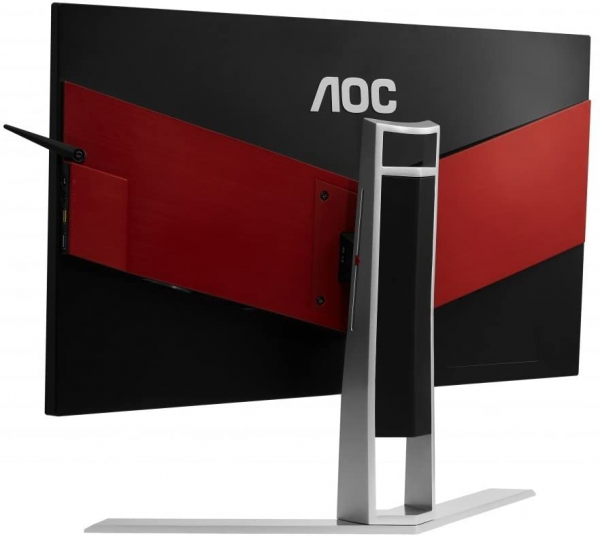
Reactivity
The AOC AG271QG does not use Pulse Width Modulation (PWM) to adjust the brightness. It therefore does not flicker and does not cause headaches for those who are sensitive to it. This feature is called Flicker Free. AOC also offers a blue light filter on three levels.
This screen is compatible with Nvidia's G-Sync technology which dynamically calibrates the refresh rate of the screen on the number of images per second produced by the graphics card, in order to avoid two things: the phenomenon tearing of the image and micro-slowdowns ( micro-stuttering). On the Agon AG271QG monitor, the G-Sync operates over a very wide range between 30 and 165 Hz. As long as the graphics card is capable of displaying between 30 and 165 images per second, the fluidity is therefore perfect. G-Sync technology only works with Nvidia GeForce graphics cards. In contrast, the Agon AG271QG operates at 144 Hz with any graphics card and it is possible to use the ULMB - backlight scanning - to improve the sharpness of moving objects (only at 120 Hz).
We measured the remanence of the screen at only 8 ms, whether on a light background or on a black background. It is quite simply the best reactivity of an IPS panel to date. Only TN panels can go down to 5 ms. We left the overdrive on the default value (Medium setting). The latter improves the response time while limiting the ghosting effect. Conversely, setting it to High produces a very slight reverse ghosting effect.
The delay in display (input lag) is measured at only 12.5 ms. There is almost no lag between the action on the keyboard and its repercussion on the screen, but this value is slightly higher than that noted on the FreeSync model (9.7 ms).
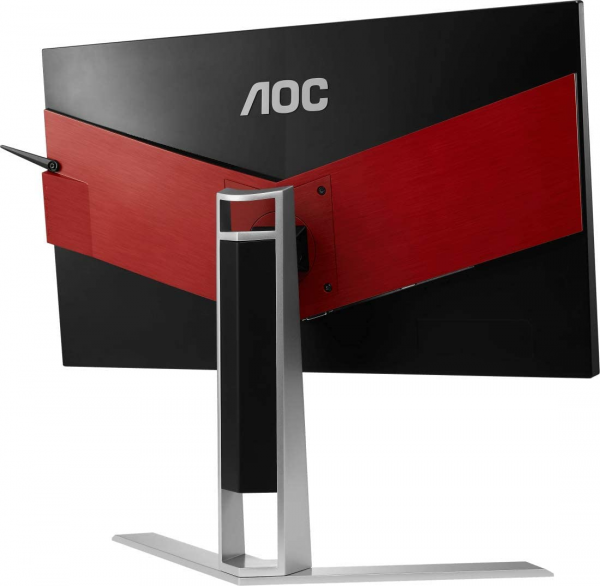
Conclusion
Like its cousin FreeSync, the AOC Agon AG271QG monitor immediately stands out as a benchmark of its kind, especially since it is more affordable than its direct competitors. This screen is perfectly calibrated, responsive and ergonomic. G-Sync compatibility is a real plus for owners of Nvidia graphics cards while others will be pleased with the presence of a backlight scanning system. We can blame it for its reduced video connection (common to all G-Sync screens) or even a lower contrast than that of a VA panel, but that's all.
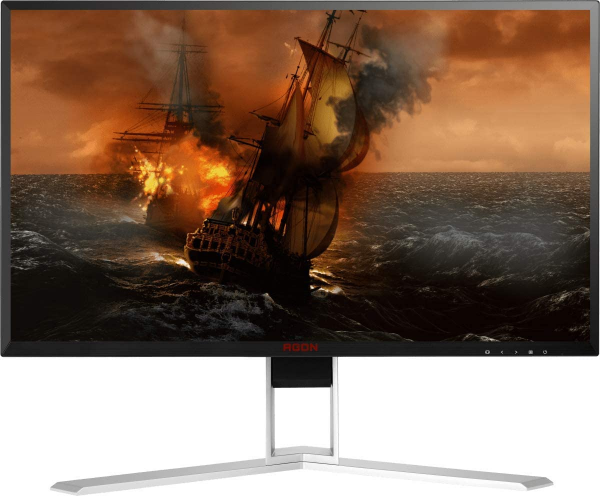
Specifications

